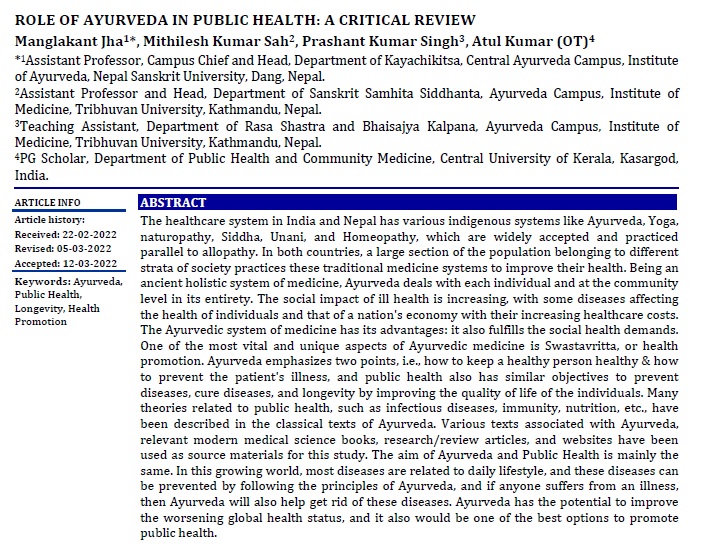Role of Ayurveda in Public Health: A Critical Review
DOI:
https://doi.org/10.47070/ijraps.v5i12.123Keywords:
Ayurveda, Public Health, Longevity, Health PromotionAbstract
The healthcare system in India and Nepal has various indigenous systems like Ayurveda, Yoga, naturopathy, Siddha, Unani, and Homeopathy, which are widely accepted and practiced parallel to allopathy. In both countries, a large section of the population belonging to different strata of society practices these traditional medicine systems to improve their health. Being an ancient holistic system of medicine, Ayurveda deals with each individual and at the community level in its entirety. The social impact of ill health is increasing, with some diseases affecting the health of individuals and that of a nation's economy with their increasing healthcare costs. The Ayurvedic system of medicine has its advantages: it also fulfills the social health demands. One of the most vital and unique aspects of Ayurvedic medicine is Swastavritta, or health promotion. Ayurveda emphasizes two points, i.e., how to keep a healthy person healthy & how to prevent the patient's illness, and public health also has similar objectives to prevent diseases, cure diseases, and longevity by improving the quality of life of the individuals. Many theories related to public health, such as infectious diseases, immunity, nutrition, etc., have been described in the classical texts of Ayurveda. Various texts associated with Ayurveda, relevant modern medical science books, research/review articles, and websites have been used as source materials for this study. The aim of Ayurveda and Public Health is mainly the same. In this growing world, most diseases are related to daily lifestyle, and these diseases can be prevented by following the principles of Ayurveda, and if anyone suffers from an illness, then Ayurveda will also help get rid of these diseases. Ayurveda has the potential to improve the worsening global health status, and it also would be one of the best options to promote public health.
Downloads


